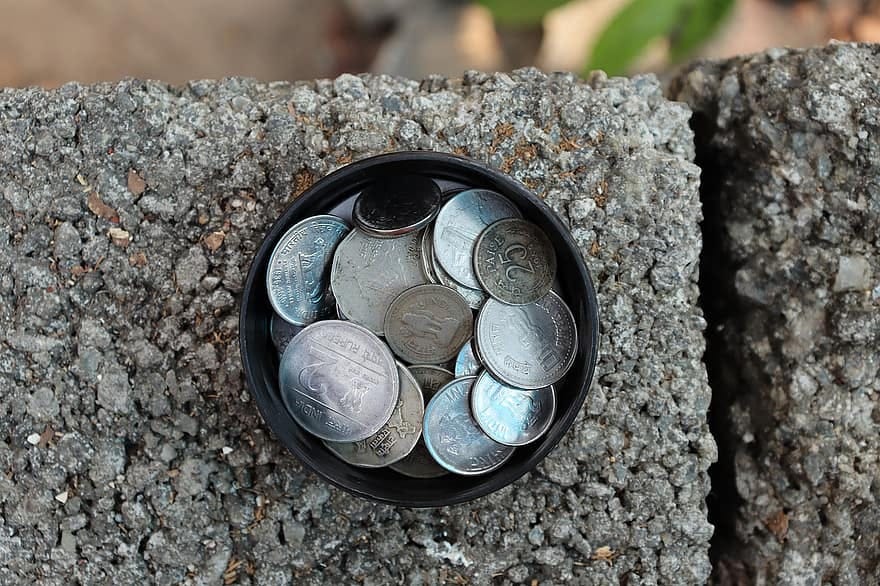#18 - Kanika Chawla interview: putting a price on the climate crisis
Hope for the best, but prepare for the worst
Hello and welcome to this week’s late edition of Lights On, a newsletter that brings you the key stories and exclusive intel on energy and climate change in South Asia.
A reminder to all that by sharing and encouraging others to subscribe you are keeping this project going. If you like this newsletter, please share it with two friends and encourage them to subscribe. It may be a small thing for you, but it makes all the difference to me!
Meanwhile, if you want to chip in with a small donation, you can do it here:

Image credit - Pikist
Financial institutions in India and beyond are taking note of the risks climate change poses to people and the local economy. Earlier this month, the consultancy McKinsey Global Institute warned that without a sharp reduction in global emissions, by 2050 between 500 and 700 million people in India, Pakistan and Bangladesh may live in places with an annual probability of a lethal heat wave of about 20 percent. Because people who work outdoors will be disproportionately affected, this alone would cost somewhere between 7 and 13 percent of the three countries’ GDP.
In its latest report earlier this week, the Reserve Bank of India (RBI) took note of the unique vulnerabilities brought by increasingly erratic weather, with a higher number of dry days as well as more frequent extreme rains. “Given that the impact of climate change on India is expected to be one of the severest globally,” the report says, “the need for an appropriate framework to identify, assess and manage financial risks arising out of climate risk has become an imperative.”
Kanika Chawla, director of the Centre for Energy Finance at the Council on Energy, Environment and Water (CEEW) has thoughts on how India, and Indian financial institutions, can navigate this uncharted territory. A specialist working on renewable energy policy, markets, finance, and socio-economic benefits, she sheds light on what the climate crisis, combined with the long term repercussions of a global pandemic, mean for India’s future.
Q: A growing body of research shows how India is particularly vulnerable to climate change, and it will need a unique and complex set of response measures. Can you walk me through what’s being done and the impacts of climate change on India’s financial stability?
A: First, we need better climate risk modelling and assessment, because temperature rise and impacts of climate change are not limited by geographical borders: they will be different in different parts of the country, and we need to get that kind of granular information. So far, we've just avoided investigating the scale of the problem. We're quite content to say, ‘we didn't cause this problem, so we're not going to do anything about it’.
Except now, whether we do anything or not, the problem is at our doorstep. While a lot of India's climate action is more on the mitigation side, especially when you build energy deployment for the power sector, we haven't necessarily been thinking strategically about adaptation. Both central government budgets and state government budgets don't really tag adaptation activities in the same way. So it's very hard to assess how much investment is already going into adaptation, because a lot of it is tagged as development spending.
We'll have to spend a lot more in adaptation, for which there are very few viable business models. A lot of this is loss and damage spending, which comes from the public exchequer, but when it comes for example to building infrastructure, we have not really explored business models at scale.
The other big area from the RBI’s point of view will be how existing exposures are affected. For instance, all the banks and non banking financial systems hold assets, or have exposure to businesses and assets, that are going to face significant impact because of higher temperature, more extreme weather events or lower agricultural productivity, so there’s also a physical climate risk.

Image credit - Kanika Chawla
On top of all these mounting risks and impacts, India is also facing the Covid crisis. How do the two shocks overlap and can you see a way of tackling them together?
Climate change [response] has a lot to learn from the Covid crisis [in terms of] how we as a society responded to that. In the face of an existential threat, the behaviour of decision makers, people and institutions changes. For example, in the case of Covid people have been able to engage with the available medical science much faster than they do with climate science. And [they do it] now, whereas climate change does seem to be something that's [for] the future.
On the finance aspect, we’ve learned that existential threats are getting more frequent. A lot of them are spurred by climate change, but they can also combine with other issues, as we saw this year. Once you see what happens when different kinds of risk are combined together, you realise how our current risk pricing [strategies] are inadequate.
So where does that leave the finance community?
At the moment, risk pricing falls short on two levels. First, are we really assessing and putting a price tag on everything that is a risk? That's where climate risk comes in [in its complexity], and that's also why you now see a lot of financial institutions greening or diversifying their portfolios, even in these crisis times. And I don't think it's an ideological choice like in the past. Now it's just a matter of good economics.
Secondly, we need to look at where the money will come from, and potential overlaps [between different crises]. And I think that the biggest opportunity of our time now, is that there will be a lot of public spending to restart the economy [after Covid].
The fabled ‘green recovery’... how is that going to pan out in Asia and India in particular?
In China, for instance, a lot of that [economic stimulus] is going to come through large infrastructure, which actually sets China back from a sustainability point of view.
Because if they're going to do large infrastructure, they're going to use a lot of steel and cement, which cause a lot of emissions.
But what if green growth could become a driver of economic growth? In India, for instance, even as the overall economy is not doing so well, we see a lot of green assets still performing quite well. And then if you combine that with calls for self reliance and enhanced manufacturing in the country, all of this offers an economic opportunity.
Take electric mobility for example: our research suggests that if we were to realise the Niti Aayog 2030 targets, with a certain level of indigenisation in batteries and vehicles, we are looking at $177 billion investment potential. These are all ways to get the economy back on track because they have a ripple effect.
Speaking of self reliance, India is due to impose aggressive custom duties on solar components imported from China, which at the moment make up for the vast majority of India’s solar equipment. Will this move boost manufacturing or, given the current crisis, does it come at the wrong time?
Whether we keep importing or not, we're still going to see much more renewables being deployed. To me, the bigger challenge is that by just sealing your borders you do very little to support your domestic manufacturing. We already have a safeguard duty in place, which may have been a life raft for domestic manufacturing, but has not allowed them to grow at scale and meet industry demands. Manufacturers need other measures, such as interest rates subvention, incentives for innovation or more R&D.
The biggest concern is that at least in the short and medium term, the cost of renewables is going to go up a little, putting a greater burden on our distribution companies that are already in poor financial state. And again to bring Covid into it, the financial situation of the distribution sector has gotten worse, but also the ability of households to pay is reduced. So even if we did suddenly decide to implement some kind of tariff reform on the consumer side, this may be the worst time to do that.
Is there a lesson that Indian financial institutions could gain from the combination of Covid and climate crisis?
Climate change brings a lot of physical risks. Those need to be priced, but we also need to keep into account that climate change related policies will make many existing businesses unworthy borrowers, the thermal sector being one of them. So banks with these kinds of exposure are quite likely to take a hit.
We are not talking enough about how the business paradigm is just going to shift: Those who were seen as high quality borrowers are now no longer going to be viable borrowers and all the exposure that banks are holding to them could adversely impact the banking sector. And what does that mean for the economy as a whole? That's why there is a call for the RBI to participate in global exercises around stress, to be as prepared as we can. Especially now after Covid, we just cannot risk [a new crisis that could] shake the entire financial system.
Do you feel optimistic that some of the problems we discussed today will be addressed effectively, or will these risks remain ignored until it’s too late?
I'm quite optimistic about the renewables financing story. I think the market is mature and we're developing rapidly every passing day, but if you look at the economy as a whole, that’s where you have to make some tough decisions. There are questions around phasing back investment in certain sectors, doing this kind of stress testing and and thinking about adaptation spending, which is going to be in the billions, if not trillions of dollars. On that part I am a little bit more concerned because I think that the conversation is still so elementary. And mostly just being avoided.
The interview was edited for length and clarity
If you’ve been forwarded this newsletter and you’d like to read it every week, you can subscribe below. Tip: if you add my address to your contacts, this email won’t end up in the spam or promotion folder!



